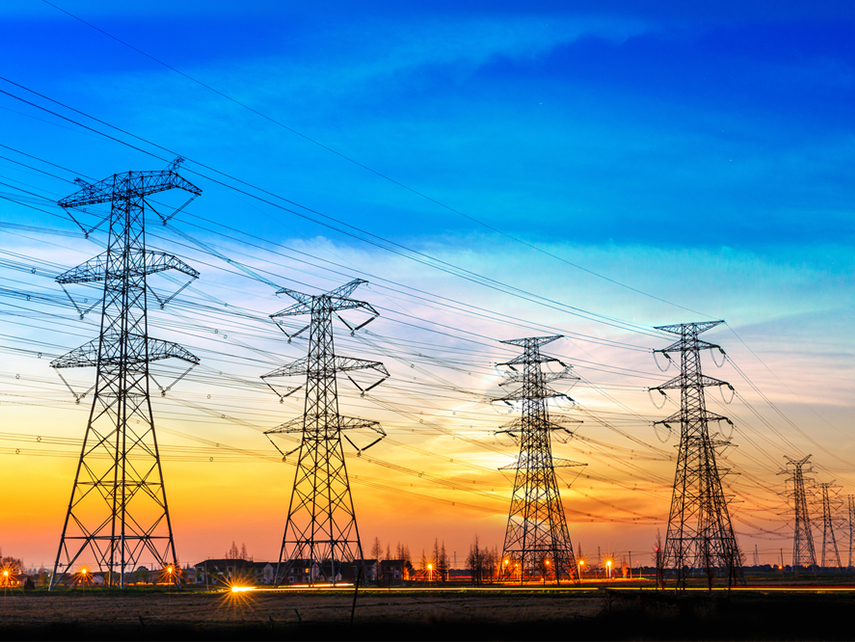The Plan aims to effectively implement Decision No. 500/QD-TTg dated 15 May 2023 of the Prime Minister approving the National Power Development Plan for the period 2021-2030, with a vision to 2050 (Power Plan VIII). The Plan develops a roadmap to effectively organize the implementation of schemes/projects to meet the planned targets of National Power Development Plan VIII, meet power needs for socio-economic development in each period, and ensure electricity must be one step ahead.
The Plan implements a strong energy transition from fossil fuels to new energy sources and renewable energy to reduce environmental pollution and greenhouse gas emissions, contributing towards the committed targets under the Nationally Determined Contributions and the 2050 net-zero target of Viet Nam.

Illustration
The Plan identifies solutions to attract investment in power development through National Power Development Plan VIII during the planning period; and coordination mechanism between ministries, branches, and People's Committees of provinces and central cities in implementation.
The Plan orients ministries, branches, and People's Committees of provinces and central cities in coordinating with the Ministry of Industry and Trade and relevant units to effectively implement National Power Development Plan VIII.
The Government requires that the Plan for implementing National Power Development Plan VIII must closely follow the targets and orientations of National Power Development Plan VIII, and concretize the tasks assigned in Decision No. 500/QD-TTg of the Prime Minister; Ensuring balanced development of power sources by region, aiming to balance intra-regional supply and demand; Ensuring feasibility, synchronization and flexibility in power source/grid development by the context and national resources; Mobilizing maximum resources and participation of all economic sectors to develop power industry, etc.
Regarding the list of important power source projects, the industry's investment priority plan until 2030, of which, the total domestic gas thermal power capacity will be 14,930MW; Total LNG thermal power capacity will be 22,400MW; Total coal-fired power capacity will be 30,127MW; The total capacity of cogeneration power sources, power sources using residual heat, blast furnace gas, and by-products of the technological process will be 2,700MW; total hydropower capacity will be 29,346MW; Total pumped-storage hydropower capacity will be 2,400 MW.
Renewable energy power capacity of localities/regions and list of power projects by 2030: Total offshore wind power capacity will be 6,000MW; Total onshore wind power capacity (onshore and nearshore wind power) will be 21,880 MW; total hydropower capacity will be 29,346MW; Total biomass power capacity will be 1,088MW; Total power capacity produced from waste will be 1,182MW; Total rooftop solar power capacity (self-produced and self-consumed) will grow by 2,600MW; Total battery storage capacity will be 300MW.
Regarding other types of power sources, by 2030, it is expected to develop 300MW of flexible power sources; Prioritizing development in areas likely a shortage of spare capacity; Taking advantage of existing power grid infrastructure.
In addition, it is expected to import about 5,000MW of electricity from Laos, which can increase to 8,000MW when there are favorable conditions with reasonable electricity prices to take advantage of Laos' export power source potential.
Regarding renewable energy sources for export and new energy generation, the plan clearly states that the locations with the potential to export electricity abroad are the Central and Southern regions. The export scale will range from 5,000MW to 10,000MW when there are feasible projects.
The Plan also specifies a list of important transmission grid projects, investment priorities, and power grids connected with neighboring countries.
Regarding the Rural, Mountainous, and Island Power Development Program, the Plan clearly states that supplying the national power grid or renewable energy sources to about 911,400 households (of which, about 160,000 households without power supply from the national power grid, 751,400 households need to be renovated) of 14,676 villages in 3,099 communes.
The Plant supplies power to 2,478 small and medium-sized pumping stations in the Mekong Delta region combined with supplying power to the people; Supplying the national power grid or renewable energy sources to the remaining islands: Con Co Island, Quang Tri province; Tho Chau, An Son - Nam Du Island, Kien Giang province; Con Dao island district, Ba Ria - Vung Tau province.
The plan also proposes to research and build two inter-regional renewable energy industrial and service centers in the period up to 2030. Specifically, the Renewable Energy Industrial and Service Center in the North is located in Hai Phong, Quang Ninh, Thai Binh areas, etc. In the future, we can consider expanding to neighboring areas. The scale of this Center is about 2,000MW of offshore wind power and about 500MW of onshore and offshore wind power.
The inter-regional renewable energy industrial and service center of the South Central-Southern region is located in Ninh Thuan, Binh Thuan, Ba Ria-Vung Tau, Ho Chi Minh City, etc. In the future, we can consider expanding to neighboring areas. This center has an offshore wind power capacity of about 2,000-2,500MW, onshore and offshore wind power capacity of about 1,500-2,000MW.